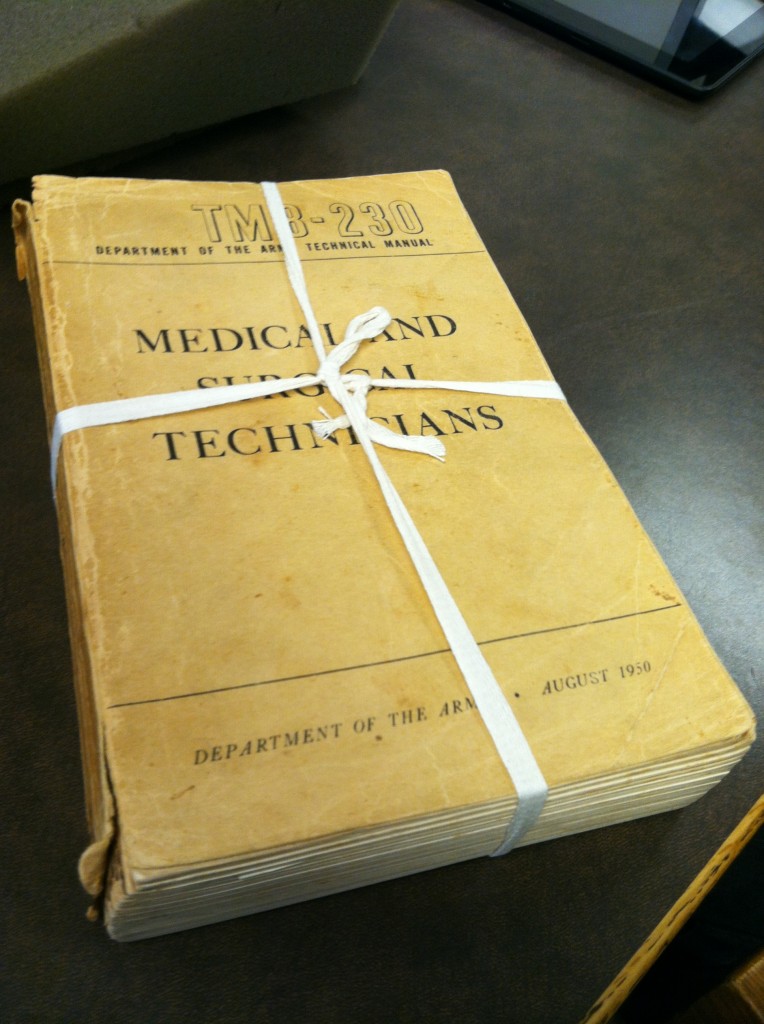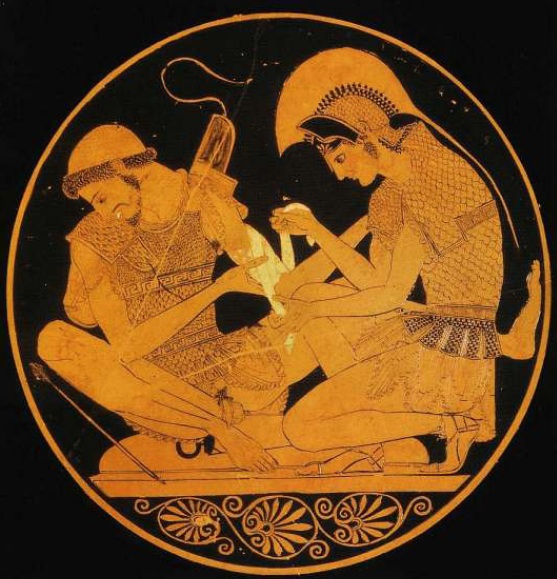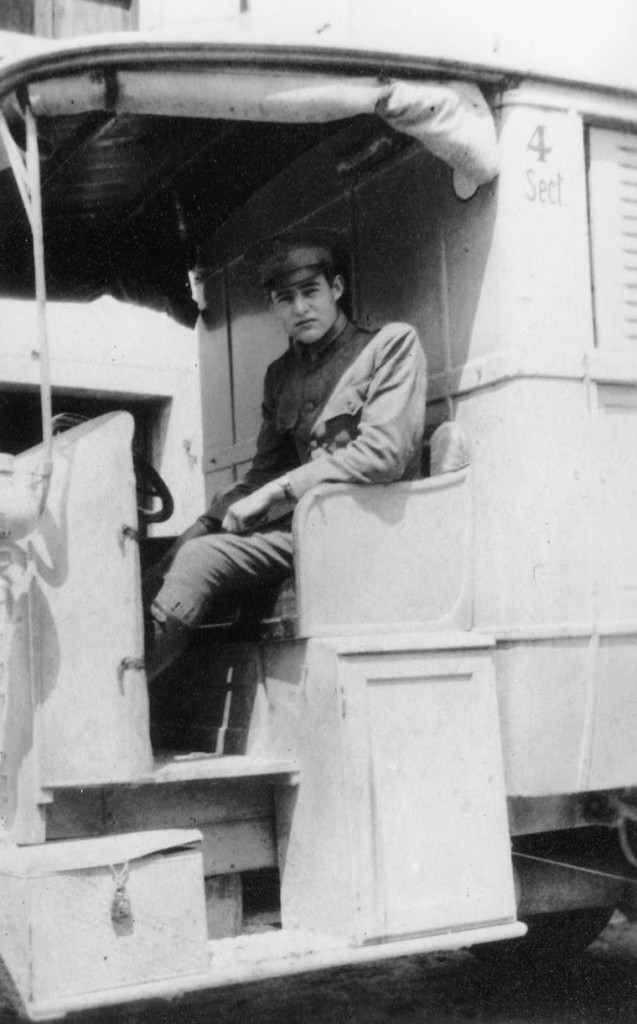Note: This entry was originally posted on a blog I created for my History of Medicine class final project during December 2012.
When the National Academy of Sciences published its White Paper in 1966, it found civilian EMS services woefully inadequate, yet praised the military, stating: "Excellence of initial first aid, efficiency of transportation, and energetic treatment of military casualties have proved to be major factors in the progressive decrease in death rates of battle casualties reaching medical facilities, from 8 percent in World War I, to 4.5 percent in World War II, to 2.5 percent in Korea, and to less than 2 percent in Vietnam."
Unsurprisingly, the NAS recommended emulating military techniques. I was curious what the military was doing that worked so well, beyond simply removing injured soldiers from the battlefield with great speed (I've already covered some of its transportation techniques in my Hemingway post). To answer my question, I happened to find a 1950 edition of US Army Manual TM8-230, Medical and Surgical Technicians (search the text here). That this manual was written in 1950 means its authors had the benefit of discovering what worked well and what didn't work well for emergency medicine in the World Wars. Its age also means that these were military standards that would have been implemented over a decade before the NAS began evaluating EMS in the states. (A 1930 edition is available; a brief preview offered by Google suggests it had similar, if not as advanced or thorough, contents, but I haven't been able to find a copy of the whole book for a proper comparison. No doubt many other year editions exist. I'd love to see what the current issue looks like.)





